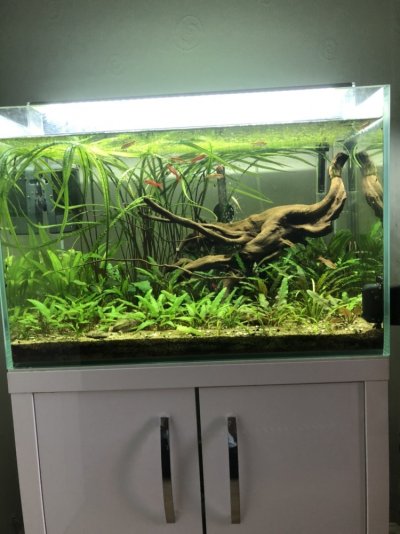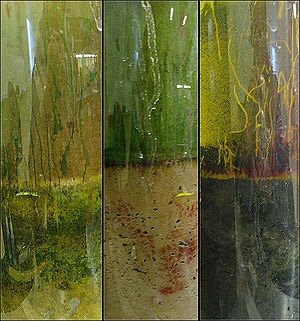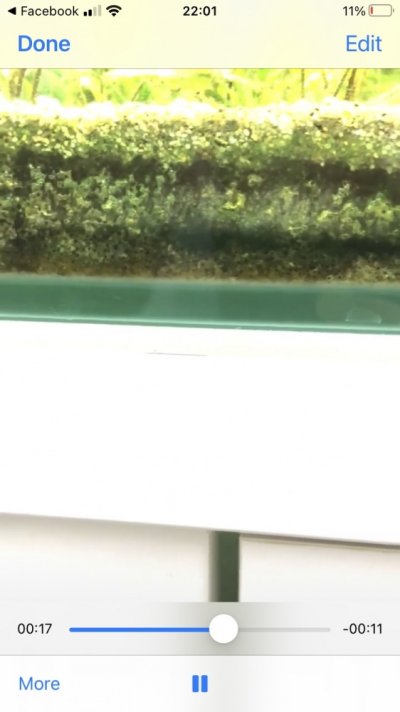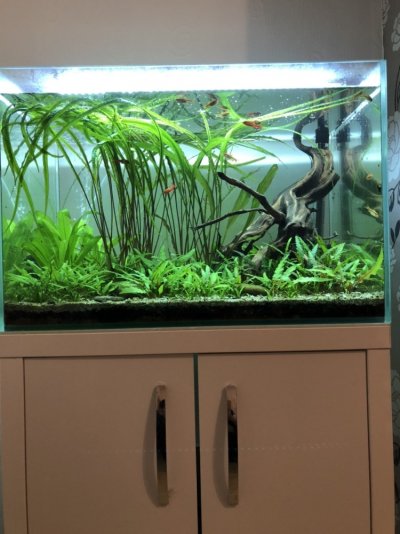So thought I’d best update here since I do still have the aqua opti 85 and it’s not so low tech or El natural anymore.
I like to experiment with my tanks as some of you know. Or my tank at least as I only have the one now. If there is a general consensus on something I test it to see if it’s true or false. I’ve certainly debunked a lot of nonsense this way for sure but I’ve also had some of my ‘beliefs’ or more a hope proved wrong. I still remain open minded to everything until I’ve tested or have known it to be tested by others.
The most recent thing that I wanted to be true was lush plants in a minimal input tank. An El natural tank teeming with rich plant life grown in mulm. The compost of the aquarium or humus if you like.
It doesn’t work. Of course there are people probably reading this thinking ‘duh’ right now. And thats fine I deserve it, but I can also say that I know it to be true because I’ve tried it. Not because someone said so and that means more to me.
I was feeding cyclops only in a rainwater top up tank with a inert sand substrate. I maintained the airstone for stable oxygen and degassing of co2. Plants ground to a halt as you might expect. Despite the massive amount of mulm around the base of the plants. Clearly there was something missing. I wonder if the mulm would have worked better in a gravel tank where it could migrate further down in to the lower areas of the substrate instead of building up on the sand. Still yet to try an undergravel filter. But that is their sole purpose. The snails absolutely love the mulm. So to the shrimp. There must be so many microscopic organisms in that fluffy light brown stuff. Certainly something not to be feared.
Now Im back to dosing fertilisers and have been experimenting with dolomite and potassium bicarbonate to help the plants with their carbon needs. If indeed the airstone isn’t providing enough co2. At this point the tank remains stable. Beautifully clear with the internal filter. One of the down sides of the airstone is when shrimp disturb the substrate and kick the mulm up it stays in the water column and looks unsightly. Never causes algae though.
Fish are perfectly happy. I have tons of Malaysian trumpet snails, shrimp etc. And now perform water changes more regularly. Though on water changes I can honestly say the tank does just the same without them. Plants don’t do well but the fish and shrimp and snails do just fine. They honestly do. How long this can go on I’m not sure but I expect indefinitely. I did 12 months but got tired of dull plants. I know of someone who has only done a few water changes on one of his tanks in 25 years. He does use a soil substrate though which could help buffer. But that soil is also 25 years old. Makes you wonder how much buffering capacity his extremely hard tap water had initially. With no water changes nothing comes out and you would imagine it is recycled. Particularly with the soil and its trillions of microorganisms.
I’m still convinced the substrate is one of the most important aspects to tank stability. It’s the substrate that eventually stops algae growing for example. When the ‘balance’ is achieved and you have a full suite of organisms carrying out all the necessary processes. This also helps plants obtain important nutrients.
Right now I’m testing higher light. Over 100 PAR in a tank with no co2 injection. I want to test stability. As my friend Niko says. A stable tank is indestructible. You can throw anything at it and it will always run clean. He means, co2, no co2, increased light. Any method. I’m going to lay off the carbonates. Just the very few carbonates I’m going to get through the weekly water changes. Lets see if their is enough co2 in this tank for the less demanding plants at such a high PAR. Though not nearly as much as sunlight. My plan is to see how things materialise. Then I’m going to add some carbonates and see if the plants pearl as this would suggest a high rate of photosynthesis as seen with carbon injection and high light.
For now I’ll leave a picture. Probably not the best quality but things are going well.





